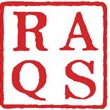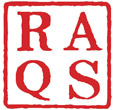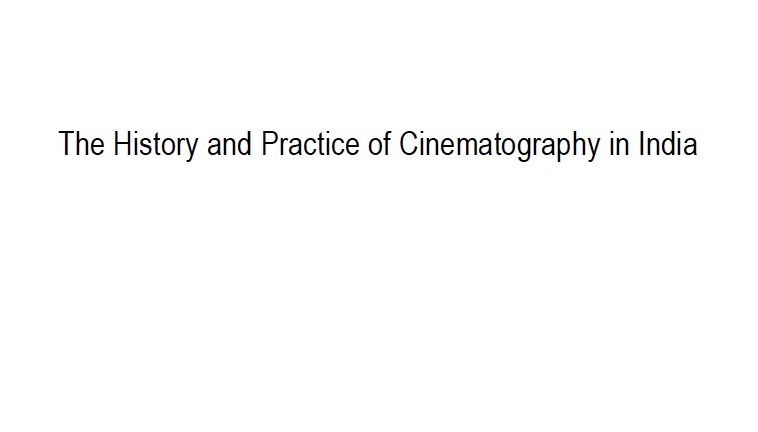The History & Practice of Cinematography in India is a collection of transcripts of interviews with veteran and working cameramen, texts, archival photographs, production stills, bibliography, a timeline and other resources on the history of cinematographic practice in India. The collection is a first ever compilation of valuable oral histories of the making of some of the finest visual moments in the history of Indian Cinema. This collection emerged out of a five year long research and documentation project on the history and practice of cinematography in India undertaken by Raqs Media Collective, Delhi, with C.K. Muraleedharan a practicing cinematographer and initiator of Cinematographers Combine, Mumbai. The project received support from the India Foundation for the Arts, Bangalore from 1996 to 2000. The interviews and research materials were in the public domain and hosted at www.sarai.net under the rubric of Cameraworking from 2001.
The interviews feature several generations of cinematographers talking about how technology shapes the making of their artistic decisions, often overcoming the limitations imposed by cameras, film stock and lights to create new and arresting images and how artistic intentions require artists and technicians to improvise and innovate with technology, sometimes leading to new breakthroughs, such as the use of reflectors for ‘bounce lighting’ that then get absorbed into standard, mainstream practice. The interviews go as far back as the silent cinema, and include discussions on how the coming of sound affected shooting, the transition from black and white to colour film, the development of lenses and lighting technology, evolution of cameras into light weight and hand held cameras, documentary cinematography, the advent of video and digital cameras and considerations on light conditions in India, the training, education and apprenticeship of cinematographers, and the range of work and industrial practices in the different Indian film industries.
The cinematographers and technicians interviewed include:
Excerpt: ‘SHAMA: Bansida, I have heard that you started as a set designer with Jean Renoir’s The River.BANSI: In a way The River is the true beginning, although I had, been in films for two and a half years at that time. It was during the making The River that I truly learned the craft of designing for films, from conceptual sketches to the three-dimensional set.
A lot of this film was shot on actual locations in Barrackpore, near Calcutta. In a big colonial house there and in its garden, overlooking the river Hooghly, we added, deleted, constructed and made changes to suit the needs of the script. All interiors were sets built in The Great Eastern Studio, Calcutta (now defunct). Besides, there was that large outdoor set of a jute loading-unloading jetty; and a local bazaar built on the banks of the river. ‘
Excerpt: ‘The only time that I have met Dilip Gupta was not far from his ninetieth birthday, in the summer of 1997 in a small apartment in suburban Mumbai, in the course of a series of interviews with cinematographers that my colleagues, Jeebesh Bagchi and Monica Narula of the Raqs Media Collective, Delhi and C.K. Muralidharan, of the Cinematographers Combine, Bombay did while working on our research project on the “History and Practice of Cinematography in India” with a grant from the India Foundation of Arts. This project is now at its closure, and in the last four years the story that we have unearthed through more than twenty interviews with veteran and working cinematographers is one of amnesia and delayed remembrance, of fading prints and damaged negatives, of archives that collect absences, of a sudden rush to buy the television rights to old classics
when it became clear that the monster of television needed to feed off retro chic and nostalgia, of cameramen who created images of astounding beauty and were forgotten when it came to authorial recognition and of ritual obeisance to the hoary tradition of Indian cinema coupled with a studied neglect of the living history of practitioners and technicians. ‘
Excerpt: ‘Everybody is in a hurry. Not only the technician. The Star is in a hurry. The Producer is also in a hurry. The traffic is in a hurry. This is the ‘hurried’ age. No doubt the modern technician too would like to have reasonable facilities and time to do his job well. Sometimes these conditions are thrust upon him. Instead of covering certain things from a qualitative point of view he is also forced to deal with the quantitative aspect of the merchandise. And that is, I think, his handicap. But there are so many innovations now as far as the quality of film, of the negative, of various kinds of lenses, opticals that they can achieve much more than our colleagues of yesteryears. We can- not ignore the tremendous technological strides made both in the sound track and negative, rawstock, lenses and effects that are available. Yes, he has to work fast. To work fast. he has several. compensatory elements at his disposal. But I wonder if he always like to work fast. He would like to take little time to enhance the quality of his work.
– It’s All Wild Jumboree of Noise, Conversations with Dilip Kumar (from Indian Cinematography, published by WICA, 1993) ‘
Excerpt: ‘What proceeds is an attempt at outlining some of our findings and concerns in the course of our research in progress on Cinematography.
EXCERPT 1: ‘Tarang’ Dir – Kumar Shahani Cinematography: KK Mahajan
A man and a woman sit talking in a shack. The dark blue sky of twilight in a city is visible through the window. A train rushes past; its carriages aglow. As the woman speaks, we can sense the room begin to turn on it’s own axis, as if it had been caught in the spin of the conversation, or as if we, oblivious to the man and the woman had begun to walk slowly around them. The shadows in the room glide as it turns, the rhythm of the conversation finds and echo in this subtle circumnavigation. As if the room were the earth, the world itself, rotating as it must, and the train a rushing meteor. And we, outside this magic circle, witness this through the eye of the person who caught this moment in time. And then held it up to us to see in a mirror with a memory – called the cinema. ‘
Excerpt: From “Round the Town” (Reviews) “KISAN KANYA”Director – Moti.B.Gidwani Production – Imperial Film Co. Scenario – S.H.Manto Photography – Rustom.M.Irani
“Quite good throughout & beautiful at places. Certainly an improvement on previous Imperial pictures.”[The sound recordist is mentioned by name but not the editor]
Cine Color Process (by W.N.Henius)“Good Work. The colour in certain places is remarkably beautiful and true to life… picture could be called a great step forward & a successful one, in bringing colour to the Indian screen…”
[This questionnaire was prepared to encourage reflected responses on cinematographic practice by practising cinematographers. This was made keeping in mind that most cinematographers are exceedingly busy travelling as well as covering large distances – this was meant to keep them company on their journeys… Also, this questionnaire allows for a long-term engagement and bench marks our concerns. This was the result of a distillation of three years of research for the project, and was mailed to more than 50 cinematographers.]
Excerpt: In submitting the final research report of the “The History and Practice of Cinematography in India” we are deeply conscious of the enormity of the exercise that we undertook when we embarked on this project in 1996.
While it may have taken us all of almost five years to come to the moment when we feel that we can submit something that has the words ‘final’ on it, we also recognize the ephemeral nature of this moment. The history of cinema in India has not as yet had a curtain call, and in some senses, one might be forgiven for thinking that the game, insofar as the practice of cinematography is concerned, is only just beginning.
This is not because cinematography in India does not have an impressive body of work to call it’s own. If anything, this research is able to demonstrate the vitality of the work of the cameramen who worked in the studios of Bombay, Kolhapur, Calcutta, Trivandrum and Madras for the last many decades. But it is only now that there is beginning to be the first sparks of professional self-awareness. There is only now a foundational public consciousness about the fact that the craft of the cinematographer is something that needs to be looked at seriously, in and of itself, and not merely as an adjunct to the ‘stars’ of the firmament of cinema in India.


